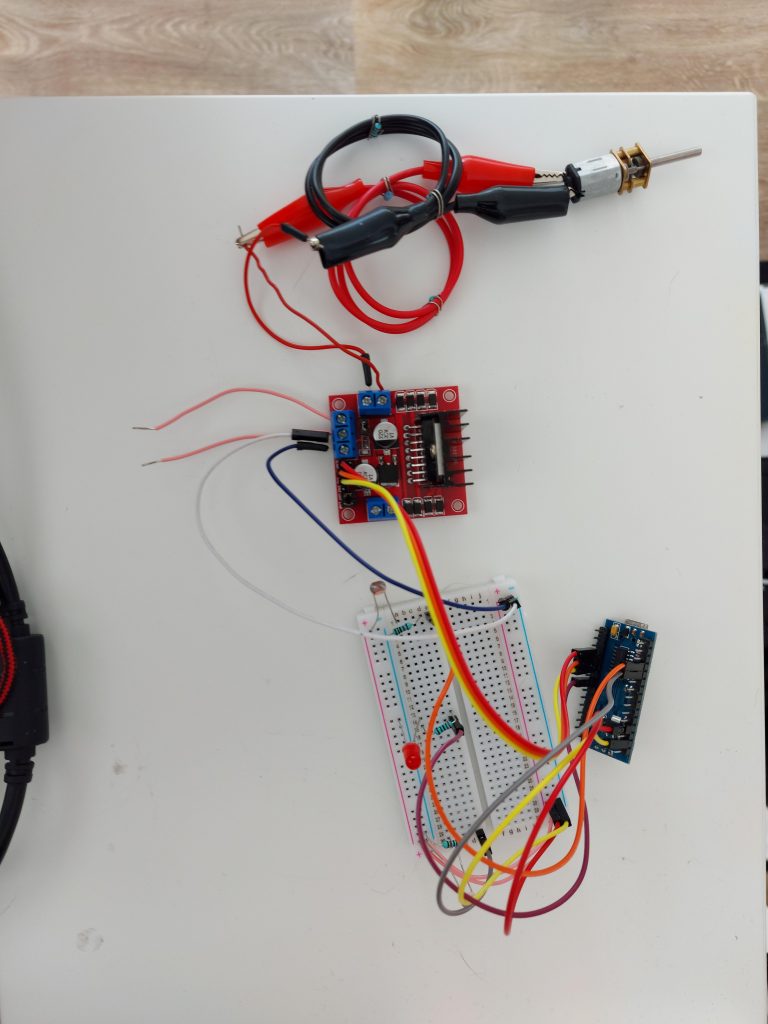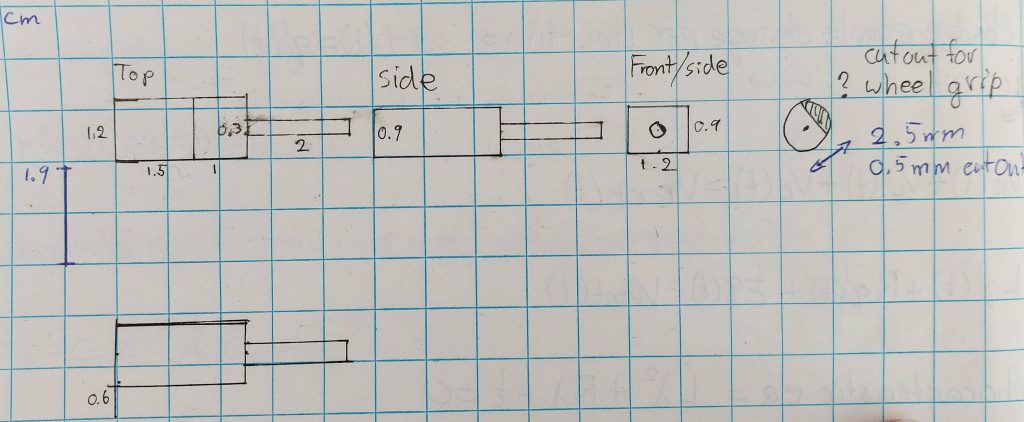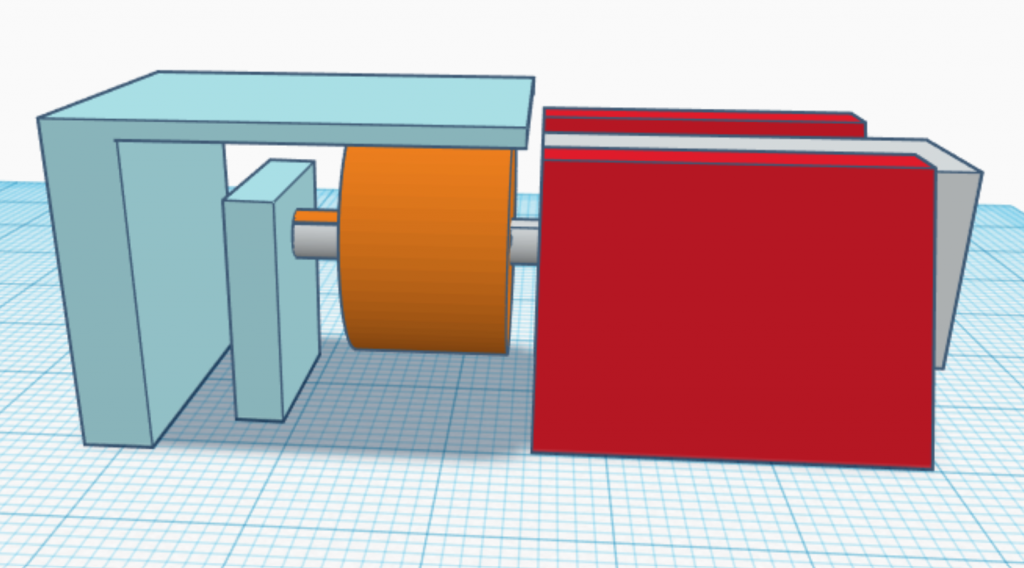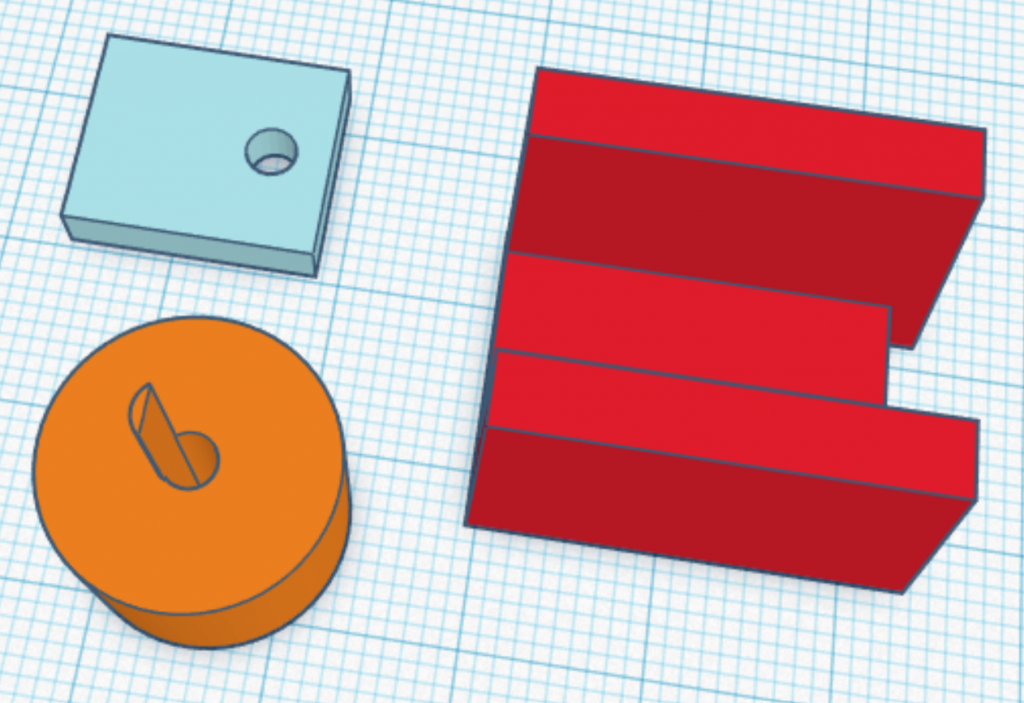I like the word ‘indolence’. It makes my laziness seem classy.
Bernard Williams
First First off: This is an ongoing project, tools required for finishing the project are on university grounds which can’t be accessed due to COVID-19.
Second First off: A lazy susan is a turntable placed on a table to act as a food distributing aid. Food can be placed on top and be rotated around the table, so that you don’t need to lean over the entire table to grab something of a plate. The extra lazy susan is a personal project, that will allow you to turn the table without touching it, like magic.
It started off with research, finding the right components for the job that could be delivered in the desired time frame and would not cost a fortune to acquire. Light Dependent Resistors (LDR) are able to vary resistance based on light intensity. The resistance decreases when incident light intensity increases. So, the voltage over the LDR drops to a certain number (between 0 and 1023) depending on the amount of light that is blocked. Two LDR’s will be used to sense if the user wants to turn left or right. If both LDR’s are blocked at the same time, the system will stop and flash an LED, giving feedback to the user to only use one direction at the time.
To control the motor it is easiest to use either a stepper motor or DC motor in combination with an H-bridge, to easily switch polarities for going left or right. An H-bridge will supply the necessary power for the motor from an external power source relieving strain on the Arduino’s power supply, who’s current source probably wouldn’t be up for the task. The task requires high-torque, low to medium speed as the table can be quite heavy and it is not desired to spin all the food onto the surrounding users. The ideal H-Bridge to use is a DRV8871 dc motor driver but cost a fortune to ship(from adafruit), which resulted with having to use a (much cheaper) L298N. A less efficient Dual H-Bridge but it will suffice for the prototype. In the mean-time, a DRV8871 from Aliexpress has been ordered and will be used in the final build.
Stage 1: prototyping

Unfortunately, it never got past this stage due to the university closing down resulting in the inability to access the materials and equipment needed. This involved 3D printing and laser cutting services, and PCB/wires/soldering stations. I wish i could show more, but this will have to do for now.



